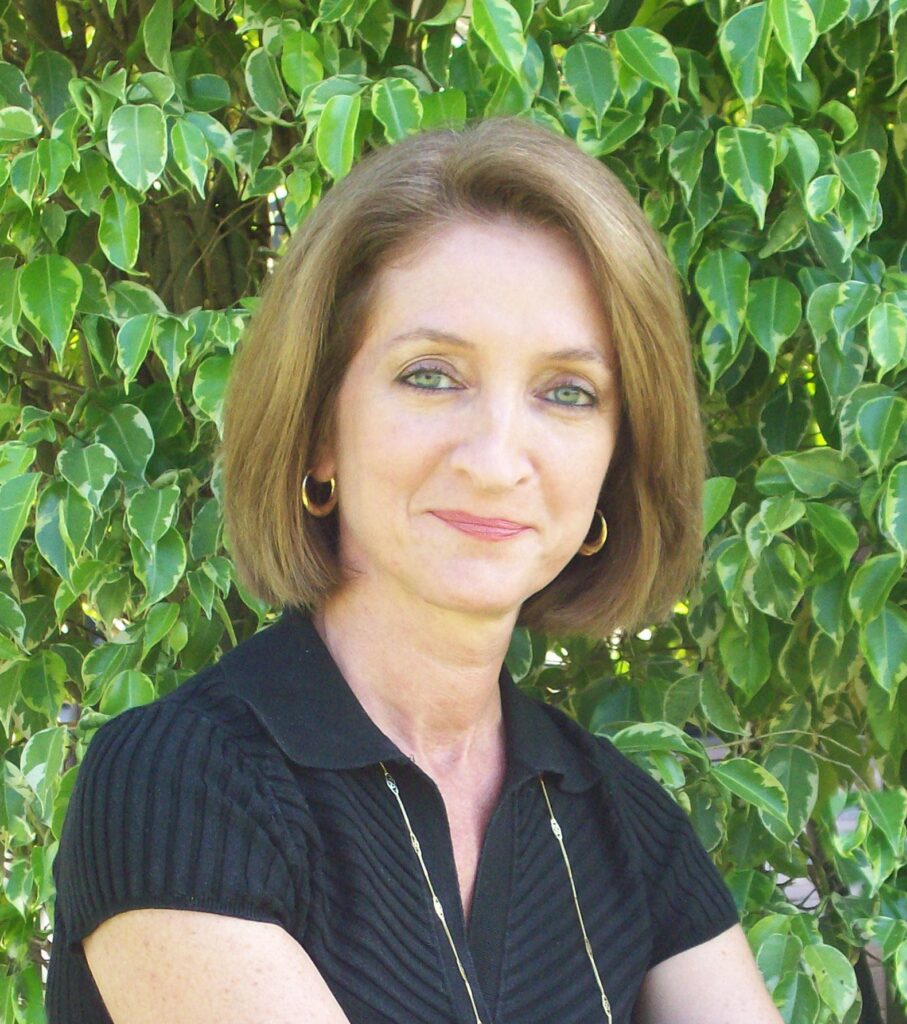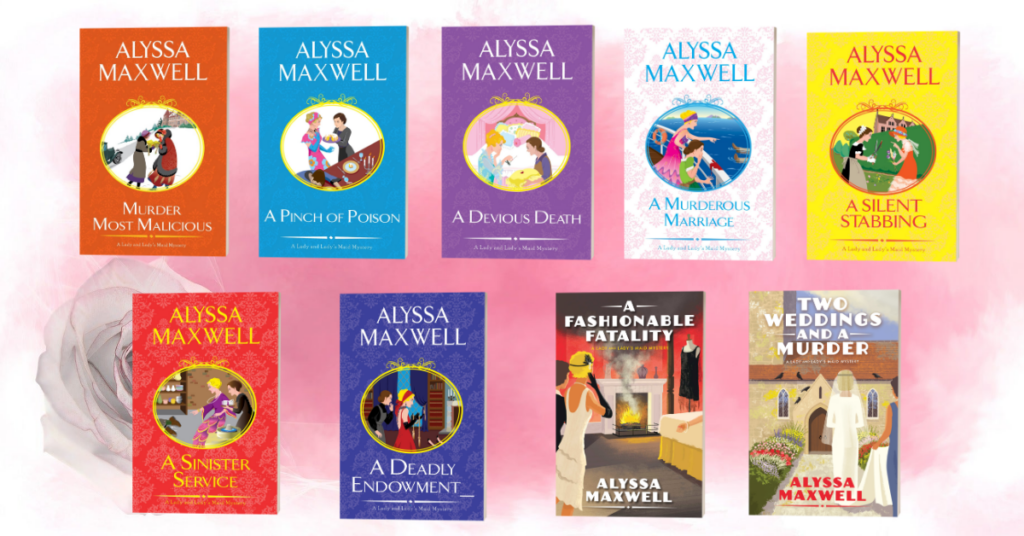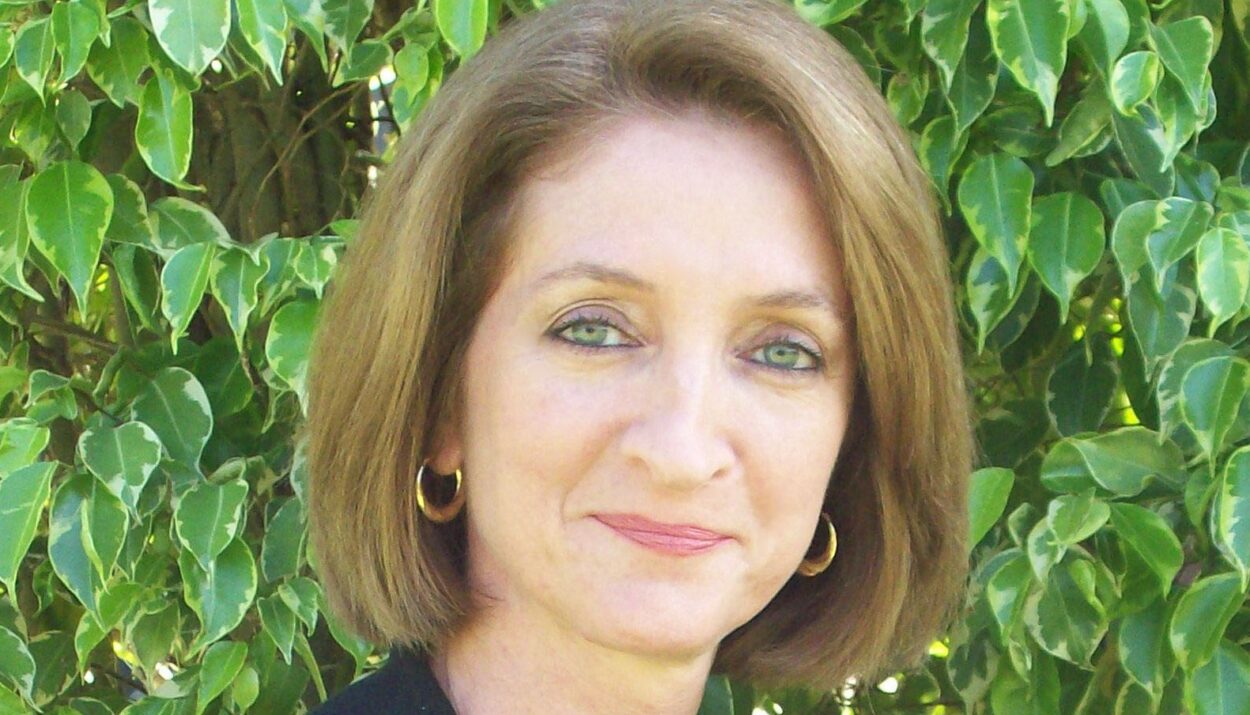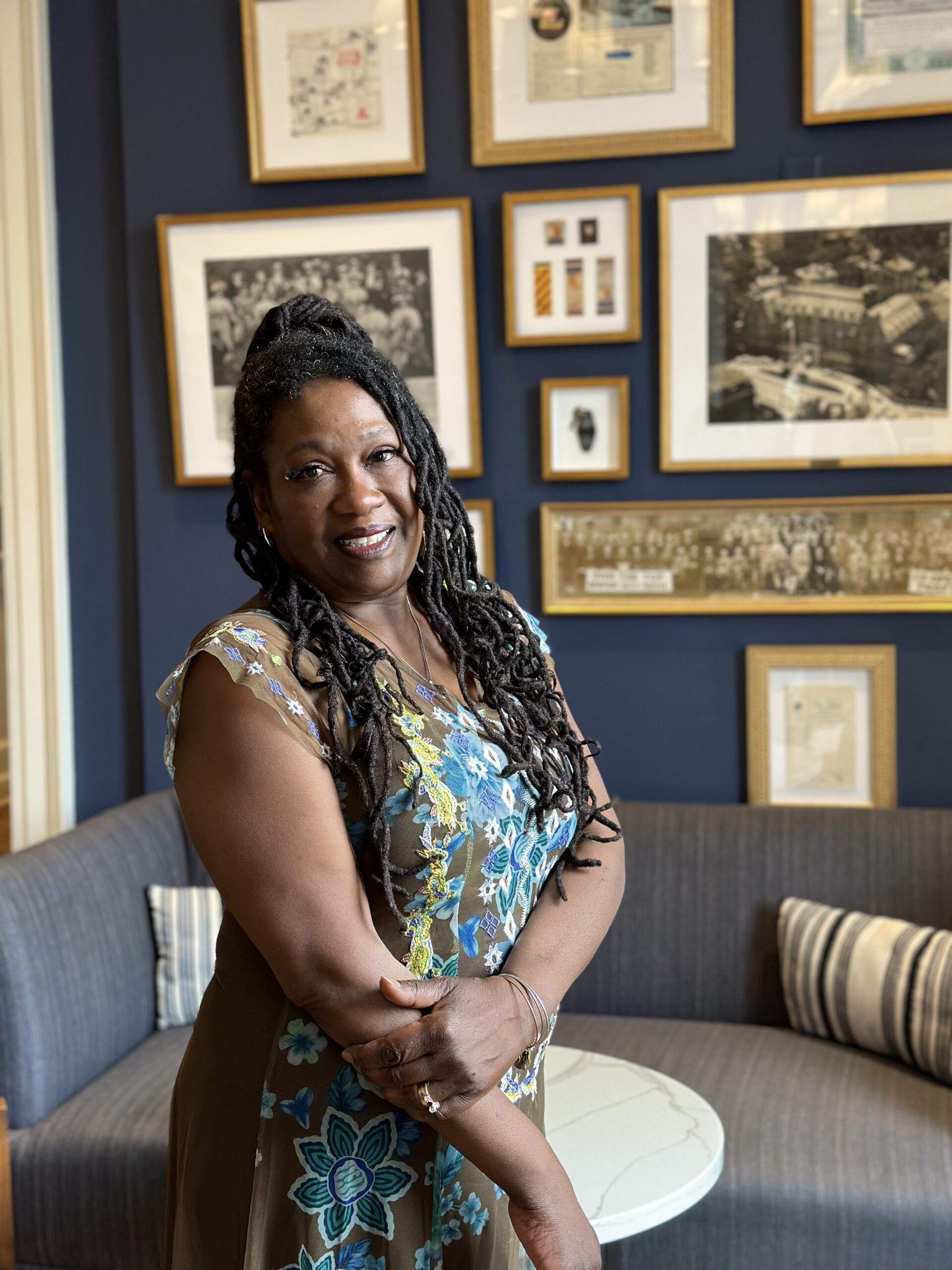
Let’s start with some big news: The Hallmark Mystery channel adapted your novel Murder at the Breakers as a movie. Congratulations! What can you tell us about the film?
The movie was the result of a pretty long process. One of the executive producers on the project had wanted to produce a Hallmark mystery for a number of years and had kept an eye out for just the right material to adapt. About a year before the pandemic, he happened to be in Newport and toured The Breakers. I’m very fortunate in that The Preservation Society of Newport County has embraced my series and sells the books in their gift shops. The producer found Murder at The Breakers there and after reading it, contacted my agent. It took another four years for the project to proceed from the initial agreement to a formal option to, finally, the actual filming.
Unlike Julian Fellows’s The Gilded Age, Hallmark wasn’t able to film at the real Breakers and used a mansion on Vancouver Island, where they film most of their movies. Fans of the X-Men series might recognize the house as the one used as Xavier’s academy. The movie is based on my book, but is not the entire book—scenes and even characters needed to be edited down to fit the time-slot—so fans of the series should keep in mind that this is a TV adaptation. For me, it was a lot of fun and a little surreal to see my characters brought to life on the TV screen, and I even connected with a few of the actors and production people on social media. I’m hoping they make more in the series.
Give us some detail about Murder at the Breakers, the novel, originally published in 2014.
Emma begins her sleuthing because her half-brother, Brady, is accused of murdering Cornelius Vanderbilt’s financial secretary in an attempt to steal a set of railroad expansion plans. In those days, people like the Vanderbilts held a lot of political influence and this could extend to how the police conducted their investigations. It doesn’t take long for Emma to realize her “Uncle” Cornelius is attempting to tie the lead detective’s hands, because his own son, Neily, has also come under suspicion. Being no fan of Brady, Cornelius would rather see Brady accused than his son and primary heir. Emma’s involvement is, therefore, out of necessity and love for her brother.
This book is where I also establish Emma’s duel heritage. She is a distant cousin of the Vanderbilts who live at The Breakers, being a great great granddaughter of the first Cornelius, or the “Commodore” as he was called. Being a descendent of one of the Commodore’s daughters means there isn’t much inheritance left for her. She is also a Newporter born and raised, which means she not only knows the city like the back of her hand, she understands the lives and attitudes of the people who make their home there year-round. In many ways she straddles both worlds, and this enables her to move more freely as she carries out her own investigation.
It’s one of the Gilded Newport Mysteries series novels that you wrote. What are the others?
As of August 20th, there will be 12! And more to come. So far, they are:
Murder at The Breakers; Murder at Marble House; Murder at Beechwood; Murder at Rough Point; Murder at Chateau Sur Mer; Murder at Ochre Court; Murder at Crossways; Murder at Kingscote; Murder at Wakehurst; Murder at Beacon Rock; Murder at The Elms; Murder at Vinland (Aug. 20th) As I like to say, nowhere in Newport is safe!

You also have another series, A Lady and Lady’s Maid Mysteries. Give us an overview
While Emma is able to investigate among the wealthy and ordinary citizens alike, in my Lady & Lady’s Maid Mysteries I accomplish this by having co-sleuths: Phoebe, an earl’s granddaughter, and her lady’s maid, Eva. They live at Phoebe’s family’s ancestral estate in the fictional village of Little Barlow in the Cotswolds and find themselves having to investigate “above” and “below stairs.” The series takes place in the years immediately following World War I —a time of great social and economic change in England. Class distinctions have blurred to some extent, and traditional village life, i.e., with the poor basically serving the wealthy, is beginning to crumble. Those who would traditionally enter service positions are now moving to higher-paying jobs in the cities, women are entering the workforce (as they did during the war), and the drop in agricultural prices are rendering the great estates much less profitable than in the past. Phoebe and Eva, along with their families and friends, are having to learn to redefine their lives and their roles in society. It’s a pivotal time, and I enjoyed moving these characters from the old world into the more modern era.

And you write a Newport-centric blog. What topics do you cover?
I have to admit I’m not very consistent about blogging. I think that’s because I tend more toward connecting with readers on Facebook and Instagram. But when I do blog, I talk about our trips to Newport, my research, my new releases as they come out along with first chapter excerpts, and books I’ve read and recommend.
Now we’d like to learn some of your background. Where did you grow up and what schools did you attend?
I spent my earlier childhood on Long Island, but moved up to Connecticut later on. I consider this time my “formative years,” as they fostered in me a deep appreciation of history and turned me from a New Yorker into a staunch New Englander. My friends and I loved exploring our area through hiking and, once we had our driver’s licenses, by car. I lived in Ridgefield, CT, in itself a historical setting filled with beautiful examples of colonial history and architecture. After graduating from Ridgefield High School, I attended the University of Connecticut and graduated with a degree in English Lit. I suppose some people wondered what I’d ever do with that, but writing was a goal of mine from an early age.
When did you begin writing?
You could say I began writing as soon as I was able. I loved to write stories, letters to friends, and kept diaries throughout my school years. But I began to seriously write fiction in my late twenties, after a friend of mine was published and introduced me to her writer’s organization and her critique group. Although I had majored in English in college, it was through working with other fiction writers and attending workshops that I learned about pacing, point of view, character development, story tension, etc.
Did you have any mentors — and authors you most admired?
The authors I grew up most admiring were the Bronte Sisters, Jane Austen, Daphne Du Maurier, and Mary Stewart, to name a few. I had many mentors—fellow writers who shared what they had learned with their peers. The writing community is a very generous one, with published authors eagerly helping new writers learn the ropes about the business and craft of writing. One friend and critique partner in particular, Nancy J. Cohen, who writes the Bad Hair Day Mysteries, worked closely with me as I transitioned from a historical romance author to a historical mystery author.
And when did you settle on mystery as your preferred genre?
I began my published career as a historical romance author. But after nine books, I realized I had a mystery or suspense thread in every plot, so why not take the plunge and devote myself wholly to the mystery genre. I was first published in 2004, and in 2010 I made the switch by developing Murder at The Breakers as the first book in my Gilded Newport Mysteries. It sold in 2012 and was published in 2014. Mystery has turned out to be the exact right fit for me and I have never looked back.
We read on your website that your ties to Newport began when you visited friends there in high school. What appealed to you about the city by the sea?
I had always loved anything historical, and as I mentioned, my years in Connecticut deepened that interest, as did reading writers such as the Brontes, etc. For me, arriving in Newport was like stepping back in time. My friend and her family were living in one of the Newport Restoration Foundation’s newly restored colonials on the Point, and the harborside atmosphere drew me in immediately.
And then, as we read on your site, “time and again the narrow lanes and harbor‑side, gas‑lit neighborhoods drew [me] to return, and on one of those later visits [I]e met the man who would become her husband. Always a lover of history, [I] found that marrying into a large, generations‑old Newport family opened up an exciting new world of historical discovery.” Give us some more details please.
Newport is like a microcosm of American history, all of it still visible today. We can walk through town and see the progression of the architecture from colonial, federal, Victorian (with its many different styles) through the Gilded Age and into the modern day. The great variety of houses of worship and the diversity of its population through the centuries speaks to Rhode Island’s traditional attitude of tolerance, relative to the rest of New England. There is so much to learn about the American experience and how we got to where we are today. My husband’s family was very much a part of that experience—for example, their former company, The Manuel Brothers Moving Company, transported goods and furnishings from the arriving steamships to the mansions each summer during the Gilded Age. Later, when some of the mansions were deemed white elephants, the company was involved in demolition, but reclaimed some of the woodwork and other elements which they used in the building of new houses. Some of these can be seen on the Point today. But their presence in Newport goes back farther than that. On our last trip we found the graves of his great, great, great grandparents in the Common Burying Ground.
You live with your husband in Florida now, but is your heart still in Newport?
It really is, except for one small issue. Neither of us likes ice and snow. Hence our move to Florida years ago, but we look forward to our yearly visits and pack as much as we can into each one. Florida doesn’t have the same sense of history, so we miss that here.
Do you get back to visit?
We get back to Newport at least once every year. It’s a combination of vacation and a chance to see family, and a research trip for me. Even with our long history there, we seem to learn and experience something new every time. We also love to revisit the mansions. As members of the Preservation Society, we take full advantage of having free access. Sometimes, even if we only have a half hour to spare, we’ll walk through one of the houses and simply enjoy being in the midst of all that grandeur.
We always like to ask our writer interviewees what advice you would give people, whether in school or later in life, who want to write?
First of all, write what excites you, whether it be mystery, romance, sci fi, nonfiction, etc., and read heavily in your preferred genre to learn what makes a successful story. Two, seek out other writers–join a writers organization if possible (these days it can be an online group if there isn’t a local one available), where you can learn the craft, share ideas, and get feedback on your writing. And three, write and revise! Your first draft can be terrible, but keep writing through to the end, and then go back and revise, several times if necessary. It’s only through this process that we develop our storytelling skills—they’re muscles that need to be exercised.
Finally, where can our readers learn more about you and your long body of work?
Please do visit my website! There’s a lot of information there, especially about Newport, and while you’re there, if you like you can sign up for my newsletter. Don’t worry, I don’t send one out very often, but when I do it’s usually to announce a new release, an event, or a giveaway. You can also contact me through my website with any questions or observations you might have. I love hearing from readers. You can also find me at:
● Bookbub
Maxwell will be signing at Charter Books, 8 Broadway, Newport, at 6 p.m. on Sept. 24.






